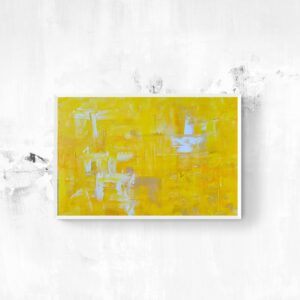

Editor’s Note: The following text has been excerpted with permission and adapted from Speculative Relations: Indigenous Worlding and Repair by Joseph M. Pierce, published by Duke University Press on August 26 and available online and in bookstores.
Geronimo faces the viewer wearing a luminous red blanket. The arresting swath of color lingers on the eye, a saturated counterpoint to the gray background and the sitter’s deeply wrinkled face. His dark eyes stare directly at the viewer. He had posed for photographs on numerous occasions, but this was the first time he allowed a painter to capture his likeness. That painter was Elbridge Ayer Burbank. Completed in 1897 at Fort Sill, Indian Territory, it was the first portrait done by Burbank of a series commissioned by his uncle, Edward Everett Ayer, then the director of Chicago’s Field Museum. Geronimo was a prisoner at Fort Sill, having surrendered to the US government along with some 30 Chiricahua Apaches in 1866. The army first sent them to Fort Marion, Florida, where they remained for about a year. The group was then transferred to Fort Sill, which is where Burbank, as he put it, “journeyed in search of [Geronimo] on what was to be the first of twenty years of hunting the real Americans for my canvas.”
There are three key strands of history that intersect through the encounter of Geronimo and Burbank at Fort Sill. First, Geronimo’s surrender marked the beginning of the end of the Plains Indian Wars, after which the settler colonial state could begin to imagine itself as having “conquered” the Indians west of the Mississippi and thus fulfilling its Manifest Destiny. Second, Indigenous imprisonment opens a new chapter in US educational policy. Let us not forget that in 1875 Richard Henry Pratt was charged with transporting 72 Indigenous prisoners on the same route Geronimo would take, from Fort Sill to Fort Marion, Florida, where he then undertook his first experiment in Indigenous education (“Kill the Indian, save the man”). Pratt’s experience at Fort Marion informed his later work as superintendent of Carlisle Indian Industrial School in Pennsylvania, which was officially opened on November 1, 1879. We move from the demand for extermination (a rather expensive military enterprise) to the promise of a supposedly more humane (and cheaper) solution to the Indian problem: assimilation through education. Third, the representation of Indigenous peoples, now supposedly domesticated, began to shift from the romanticized noble savage of the early nineteenth century (i.e., the novels of George Fenimore Cooper and the paintings of George Catlin) to the ethnographic type that was prominent among salvage anthropology in the last quarter of the century. If Geronimo’s surrender marks the culmination of this shift from savage to ward, his portrait represents a similar turn in how Indians were imagined in the settler mind. The Indian becomes a visage on the horizon of disappearance.
In all, Burbank completed more than 1,000 paintings of Indigenous people from over 100 nations across Turtle Island. He made seven portraits of Geronimo, two of which are held in the Newberry Library in Chicago, which also holds his letters and several notebooks about his time in Indian Country. The two Geronimo portraits date from 1897 and depict the Apache leader in front and profile view, echoing the framing of Indigenous subjects that was developed for anthropometric study earlier in the century. These were his earliest of his portraits of Geronimo, and they are similar in format to the rest of Burbank’s paintings of the period. The canvases are small, only 10 by eight inches, and the Apache leader signed his name at the bottom of each painting, lending an aura of authenticity to the final product.

The impulse to document supposedly vanishing Indians animated much of Burbank’s life and work. He aimed to paint Indians before they disappeared, and to do so by rendering their likenesses in realistic detail. Burbank was more ethnographic in orientation than his contemporary Henry Farny (1847–1916), whose portraits retain a sense of romanticism in their palette of cooler tones and open landscapes. Burbank was familiar with German realism, having studied in Munich before taking his first trip to Indian Territory. His uncle, Ayer, was a major supporter of ethnographic study, a patron of Catlin’s work, and helped finance the 1893 World Columbian Exposition in Chicago. And yet Burbank’s interest in realism was expressed not in the most “realistic” medium, photography, but in painting. Though the photograph was thought of as capturing life in a moment, life as it was, the medium still lacked the vibrancy of color — the clothing, face and body paint, skin and eye tone — all of which were highlighted in Burbank’s work. He would work in a realist vein, but with an interest in unexplored and untapped markets for sale as well.
Burbank’s “Geronimo” is a haunting portrait. Facing the viewer, Geronimo’s arms hug his body, wrapping around his chest as if to hold himself together — to keep from coming undone. Perhaps if we could see his hands, we might understand a bit more about the gesture underneath the blanket. There is a gesture there, one that speaks to the relationship between the sitter and the artist, one that literally holds but also symbolically retains what is hidden from view. Geronimo does not give us everything. But what is he holding back, what realness lies beneath? The portrait takes his body as real, but his Indianness is a projection. His red blanket and his racialized identity fuse in a singular, brilliant simulacrum that is more than the sum of its parts.
This portrait of Geronimo reminds me that the realism Burbank wanted to portray was an illusion. This realness must be “hunted,” in Burbank’s infelicitous recognition of the desire to capture a likeness that was only ever real from the vantage point of a White man with a gun, canvas, or camera. As Gerald Vizenor puts it in Fugitive Poses (1998), “the indian is the simulation of ethnographic portraiture.” Vizenor’s argument, which I unpack further in Speculative Relations, is that the indian is not real, but a pose, an effect of the colonial imaginary. The search for Indian realness — what Burbank calls the “real” Americans — is a quintessentially colonial enterprise. This search depends on colonial mythologies that envelop actual, real, Indigenous presence in an ongoing negation of the fact that Indigenous representation is only possible through a process of colonial invention. The invention of the Indian depends on the absence of the real Indigenous person. This absence is achieved through the capture of a body that becomes Indian when wrapped in red skin, or perhaps a red blanket.





